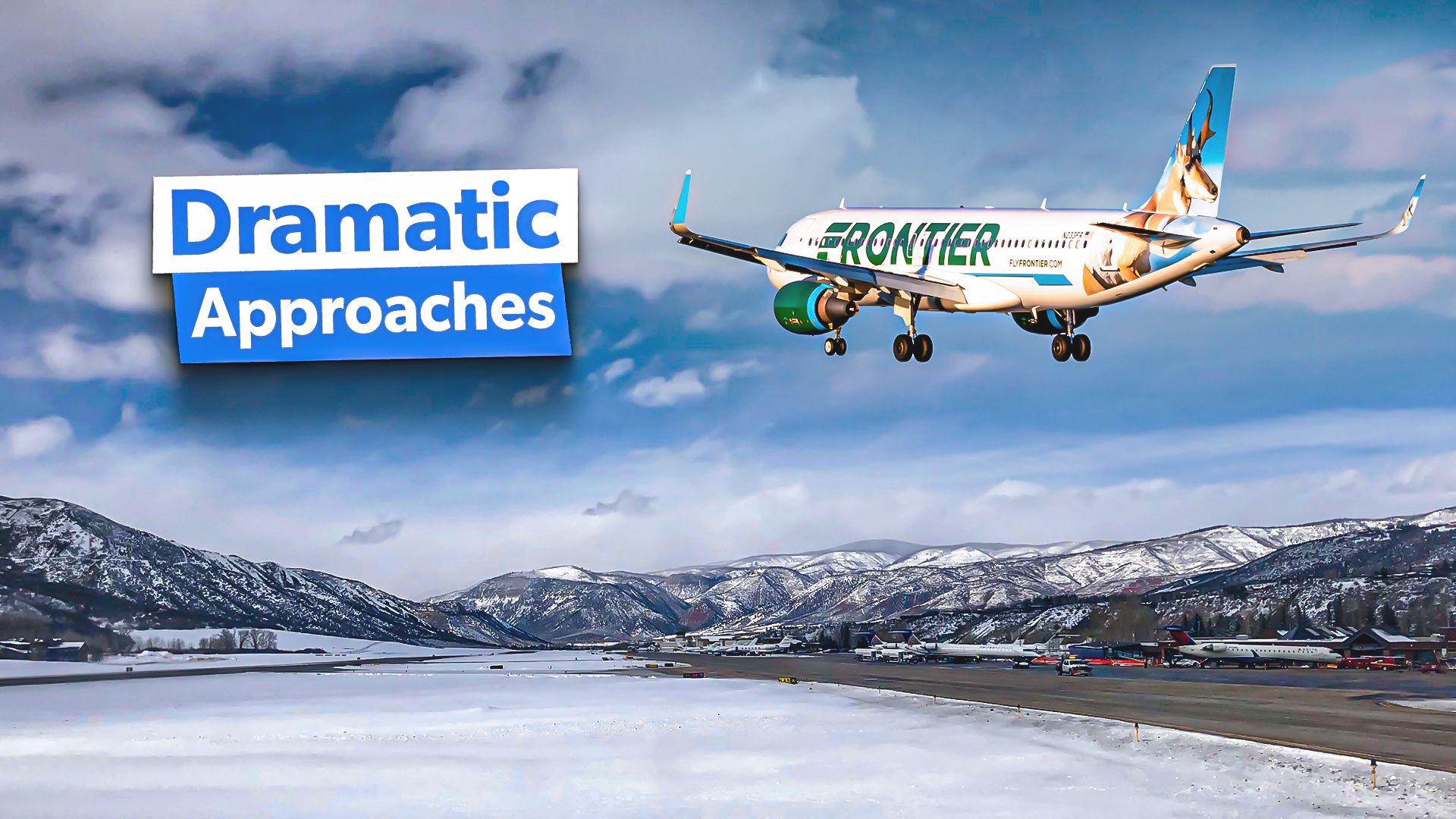Summary
- Aspen Airport enforces operating limitations, prohibiting large aircraft like Boeing 737 or Airbus A320.
- Midway Airport in Chicago has shorter runways, causing pilots to use high-speed takeoffs and aggressive incline.
- Sitka Airport poses challenges due to its runway on a causeway near the ocean and large bird flocks nearby.
Some of us live for the thrill of a challenging high-adrenaline adventure, while others prefer to keep their feet firmly on the ground. With that, several airports across the United States capture us with awe or complete panic as they require dramatic approaches or take-offs.
You takeoffshite knuckles from holding the armrest a little tight as we go through this list of tight, surprising, or unique landings at airports across the US. Which have you visited?
This summer marks one of the busiest flying seasons for commercial and hobby aircraft, and your next flight may be destined for one of these unique airports.
1
Aspen/Pitkin County Airport
IATA code: ASE
Serving the ski resort town of Aspen, the airport welcomes more regular services from major carriers than any other ski resort in North America. In winter, services to the airport skyrocket; however, throughout the year, it retains year-round services to Dallas/Fort Worth, Atlanta, Los Angeles, Denver, and Houston Intercontinental. Current operators of the airport include:
- American Airlines
- Delta Connection
- United Express
Due to its unique location, the airport works within several operating limitations. The local legislation and size of the airfield means that aircraft are restricted to a wingspan of 95 feet and a maximum weight of 100,000 lbs.
This restricts the influence of airlines operating at the airport and requires regional aircraft. For most commercial operations, aircraft must land to the south and take off towards the north. This means the Boeing 737 or Airbus A320 are generally prohibited from flying to Aspen. The airport also has a curfew, restricting take off or landing between 23:00 and 07:00.
2
Chicago Midway International Airport
IATA code: MDW
Chicago’s secondary airport is on the list due to its short runway. Midway’s runway is around 2,000 feet shorter than expected at other major airports, which causes many pilots to overshoot takeoff or landings, seeing the largest aircraft visit the airport, the Boeing 757.
Most commercial flights will take off at high speed and aggressive incline using runways 4R/22L or 13C/31C. The remaining runways are limited to smaller aircraft.

Related
Chicago–Midway Ranked Best US Airport For Business Travel
The airport came out among the top 20 worldwide.
3
Sitka Rocky Gutierrez Airport
IATA code: SIT
The airport serves the Alaskan city of Sitka and is named after its former mayor, Rocky Gutierrez. This airport is unique because the runway is located on a causeway that juts into the ocean from Japonski Island.
It is common for the ocean’s waves to crash onto the runway during storms, and due to its exposed location, it can experience high winds. Large flocks of birds live close to the runway, which adds another challenge for pilots.
Current operators include:
|
Airline |
Destination |
|---|---|
|
Alaska Airlines |
Juneau, Ketchikan, Seattle (seasonal) |
|
Alaska Seaplanes |
Juneau, Kake, Klawock, Petersburg, Wrangell |
|
Delta |
Seattle (seasonal) |

Related
US Winter Flight Chaos Stops An Alaskan Man’s Heart Transplant
The recent string of flight cancelations this holiday season prevented one man from receiving a long-awaited heart transplant.
4
West Virginia International Yeager Airport
IATA code: CRW
The McLaughlin Air Base and Yeager Airport are three miles east of Charleston, West Virginia. The airport covers 767 acres; however, what makes it most unique is that it is 947 feet above sea level and sits atop a flattened mountain.
The runway sits between two iconic cliffs, and passengers will firmly fasten their seatbelts and watch closely so the pilot doesn’t overshoot the runway. Named after Brigadier General Chuck Yeager, he was a native who grew up in the area and piloted the first supersonic flight. Current commercial operators to Yeager include:
- American Eagle
- Breeze Airways
- Delta Connection
- United Express

Related
The Various Achievements Of Legendary US Test Pilot Chuck Yeager
Seventy-five years ago, on October 14th, 1947, Charles (Chuck) Yeager became the first pilot in history to break the sound barrier.
5
Catalina Airport
IATA code: AVX
This privately owned airport is 6.4 miles northwest of Avalon, California, and is open to the public for private and general aviation. While there are no current regularly scheduled commercial flights to the airport, those lucky enough to land or take off here will recall that the airport is at an altitude of 1,602 feet.
This means that the facility is known to have downdrafts and most aircraft experience turbulence when approaching. The runway has a drop-off on both sides, so much so that pilots can’t see the end of the runway. The runway is also alleged to need repair, with potholes consistently created by heavy rain.
Its sole runway details are:
|
Direction |
Length |
Surface |
|---|---|---|
|
4/22 |
3,000 feet |
Concrete |
6
Telluride Regional Airport
IATA code: TEX
Located six miles from Telluride, Colorado, the highest commercial airport in North America has a jaw-dropping drop-off at the end of the runway, which will give anyone shivers. The airport has one runway, 7,111 feet in length, with a thousand-foot drop at the end down to the San Miguel River.
Currently, the airport has one commercial operator, Denver Air Connection, which serves Denver and Phoenix Sky Harbor. Pilots usually have a one-shot landing at this airport, as touch-and-go landings are prohibited.

Related
Why Is Denver Airport So Big?
Denver Airport is two times larger than its closest US counterpart.


